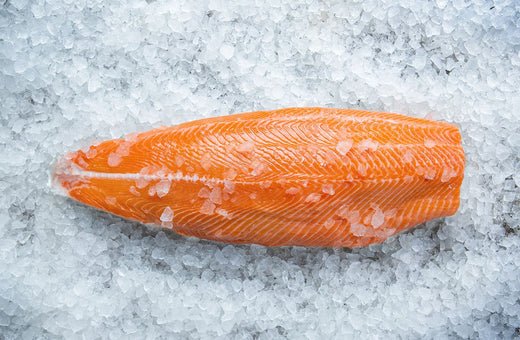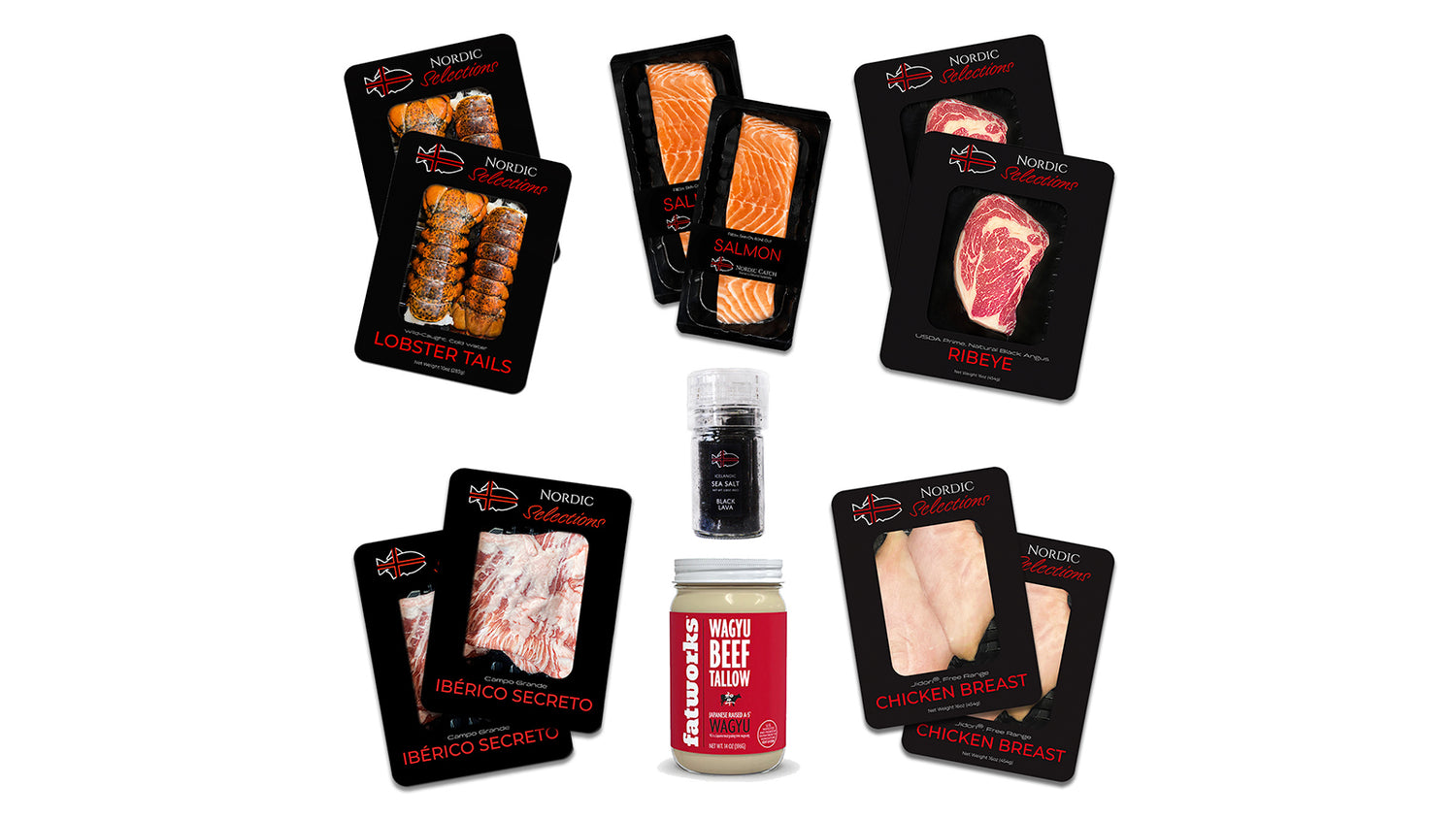
How To Safely Thaw Frozen Seafood
There's no better dish than one made with fresh seafood delivered directly to your door. But fresh fish is only sometimes an option. Your grocery store only has frozen seafood, or you froze a few extra filets from your bulk seafood order to enjoy later.
Either way, you must know how to safely thaw frozen seafood to maximize its quality and prevent foodborne illnesses.
Why It's Important to Thaw Frozen Seafood Properly
While frozen seafood isn't as good as fresh seafood, sometimes it may be your only option. In such a case, you must know how to handle it safely.
Frozen seafood can be hazardous if you don't thaw it correctly since it carries certain risks, such as salmonella and listeria. These pathogens can proliferate if seafood sits in the "danger zone" between 40°F and 140°F, making the seafood unsafe for consumption. However, proper thawing methods, such as defrosting the seafood in the refrigerator or cold water, can prevent this.
Additionally, if you’re looking for the best ways to cook fish, starting with adequately thawed seafood is crucial for achieving optimal flavor and texture.
How to Safely Thaw Seafood
Refrigerator thawing and cold water thawing are the preferred methods for defrosting seafood. They allow for a slow, controlled, and even thaw, ensuring the seafood retains its natural flavor and texture while keeping bacteria growth at bay.
Refrigerator Thawing
Remove the seafood from its packaging, place it in a covered container, and refrigerate it for 10-12 hours (up to 24 hours for larger pieces). Keep the seafood chilled until you're ready to cook it. Note that seafood can remain in the refrigerator for 1-2 days but no longer than that.
Cold Water Thawing
Place the seafood in a sealed plastic bag and submerge it in cold water, changing it every 20-30 minutes. Depending on the size of the seafood, thawing should take 1-3 hours. Ensure the bag is sealed to prevent water from spoiling the seafood. Avoid warm or hot water to prevent bacterial growth. This method is faster than refrigerator thawing but still safe, making it ideal for last-minute meals.
Backup Method: Microwave Thawing
Microwave thawing is the fastest and is good in a pinch, but there are better methods than this. It can result in uneven thawing or even partially cooking (rather than merely defrosting) the seafood, damaging the delicate texture and causing it to lose its firmness and turn mushy. If this is the only thawing method available, use your microwave's defrost settings for seafood and monitor it closely to avoid cooking the ingredients.
3 Tips for Defrosting Frozen Seafood
Thawing seafood properly will help you better ensure a safe, delicious meal. Here are a few tips to make the process go smoothly:
Adapt the Thawing Times
Different types of seafood will require more or less time to thaw. Larger cuts, like fish filets, will take longer, while smaller items, like shrimp or scallops, will thaw faster. In any case, gradual thawing is preferred.
Cook the Seafood Immediately
Cook seafood immediately after thawing it to preserve its freshness. Suppose you've used the cold water or microwave thawing methods. In that case, you should cook the seafood immediately to avoid bacterial growth. If you thaw it in the refrigerator, you have more flexibility but should still aim to cook it within a day or two.
Avoid Refreezing the Seafood
Avoid refreezing seafood once it has thawed. Refreezing can cause the texture to break down and encourage bacterial growth. If you're not ready to cook the seafood right after thawing it, refrigerate it and cook it within two days to ensure it stays fresh and remains safe.
How Not to Thaw Seafood
Never leave seafood to thaw on the countertop at room temperature, as this is extremely dangerous. Even if it feels convenient, this method exposes the seafood to bacteria-friendly temperatures for too long, increasing the risk of contamination. Keeping seafood cold during the thawing process is necessary to prevent bacterial growth.
Another improper method of defrosting frozen seafood is using hot water to speed up thawing. The extreme temperature difference begins the cooking process long before the seafood is fully thawed, causing its texture to degrade, making it mushy.
Common Thawing Mistakes and How to Avoid Them
For the best results, steer clear of these common missteps.
Not Allowing Enough Time
One of the most common mistakes is underestimating how long it takes to thaw seafood. Many people rush the process, using unsafe methods like submerging the seafood in hot water or leaving it on the counter. Thawing seafood in the refrigerator requires advanced preparation. Still, it's the safest and best way to preserve the seafood's flavor as it defrosts. Plan to avoid a time crunch and unsafe ingredients.
Using the Incorrect Water Temperature
People sometimes use hot or lukewarm water to speed thawing, which can lead to bacterial growth and uneven thawing. Always use cold water and change it frequently to keep the seafood at a safe temperature.
Improper Storage After Thawing
Once it's thawed, keep seafood in the refrigerator until you cook it. Leaving thawed seafood out at room temperature or refreezing it can lead to food safety risks. Store it below 40°F until you're ready to prepare it, and then consume it within two days for the best results.
Frequently Asked Questions
What are some safe methods to thaw seafood?
Safe thawing methods include using the refrigerator and submerging the seafood in cold water. Microwave thawing requires more vigilance to maintain safety and preserve the seafood's taste and texture. However, it can work in a pinch.
How can I effectively thaw frozen shrimp?
Submerge frozen shrimp in a sealed plastic bag in cold water; they will thaw in about 45 minutes.
What is the recommended method to thaw seafood quickly?
Submerge vacuum-sealed seafood in water for about 20 minutes for a quick thaw.
How should I safely thaw seafood overnight?
Place the seafood in the refrigerator to thaw gradually overnight.
What are the recommended methods for defrosting seafood and fish filets?
Thaw seafood and fish filets in the refrigerator for 10-12 hours or in cold water for 3-5 minutes if you're short on time.

